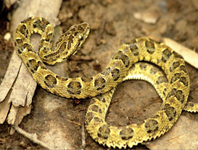Abstract
New species of Coronostrongylus and Dorcopsistrongylus (Strongyloidea: Chabertiidae) are described from Dorcopsis muelleri (Macropodidae) from Kumawa Mountains, West Papua, Indonesia. Coronostrongylus hasegawai n.sp .is most similar to C. spearei, the only other species described from New Guinea, in having 24 longitudinal pleats in the buccal cavity and spicules less than 1,400 long. Coronostrongylus hasegawai differs from C. spearei, in a suite of characters including the shape of the cephalic collar, the proportions of the buccal capsule, the disposition of the bursal rays, the length of the spicules and the proportions of the ovejector. Dorcopsistrongylus supriyatnai n.sp differs from all congeners in lacking large anteriorly directed intestinal diverticula. The genus Coronostrongylus is found in Australia and New Guinea while the genus Dorcopsistrongylus appears to be endemic to New Guinea.
References
Beveridge, I. (2002) Revision of Coronostrongylus (Nematoda: Strongyloidea) parasitic in the stomachs of macropodid marsupials. Invertebrate Systematics, 16, 893–917.
https://doi.org/10.1071/IS02007
Beveridge, I. & Chilton, N.B. (2001) Co-evolutionary relationships between the nematode subfamily Cloacininae and its macropodid marsupial hosts. International Journal for Parasitology, 31, 976–996.
https://doi.org/10.1016/s0020-7519(01)00200-4
Jackson, S. & Groves, C. (2015) Taxonomy of Australian mammals. CSIRO Publishing, Collingwood, 512 pp.
Johnston, T.H. & Mawson, P.M. (1939) Strongyle nematodes from Quensland marsupials.
Transactions of the Royal Society of South Australia, 63, 121–148.
Purwaningsih, E. & Smales, L.R. (2010) Two new species of Dorcopsistrongylus (Strongylida:Strongyloidea) from Dorcopsis muelleri (Marsupialia: Macropodidae) from Papua Indonesia. Journal of Parasitology, 96, 596–601.
https://doi.org/10.1645/GE-2393.1
Purwaningsih, E. & Smales, L.R. (2011) Two new species of Labiostrongylinea (Strongylida: Cloacinidae) from Salawati Island Indonesia. Transactions of the Royal Society of South Australia, 135, 124–133.
https://doi.org/10.1080/03721426.2011.10887152
Purwaningsih, E. & Smales, L.R. (2014) New species of Dorcopsinema and Paralabiostrongylus (Nematoda: Chabertiidae: Cloacininae) from Indonesia, with a key to species of Dorcopsinema. Zootaxa, 3857 (4), 591–598.
https://doi.org/10.11646/zootaxa.3857.4.8
Purwaningsih, E. & Smales, L.R. (2018) New species of Labiobulura (Nematoda: Ascaridida), and Dorcopsinema and Paralabiostrongylus (Nematoda: Strongylida) from Dorcopsis muelleri (Macropodidae) from Lengguru, West Papua, Indonesia. Transactions of the Royal Society of South Australia, 142 (1), 56–69.
https://doi.org/10.1080/03721426.2018.1427414
Smales, L.R. (1982) Dorcopsistrongylus new genus (Nematoda: Strongyloidea) from the Grey Scrub Wallaby Dorcopsis veterum Lesson, 1827 from Papua New Guinea. Transactions of the Royal Society of South Australia, 106, 31–34.
Spratt, D.M. & Beveridge, I. (2016) Helminth parasites of Australasian monotremes and marsupials.Zootaxa, 4123 (1), 1–198.
https://doi.org/10.11646/zootaxa.4123.1.1
Wilson, D.E. & Reeder, D.M. (2005) Mammal Species of the World: A Taxonomic and Geographic Reference. 3rd Edition. Johns Hopkins University Press, Baltimore, 2142 pp.

